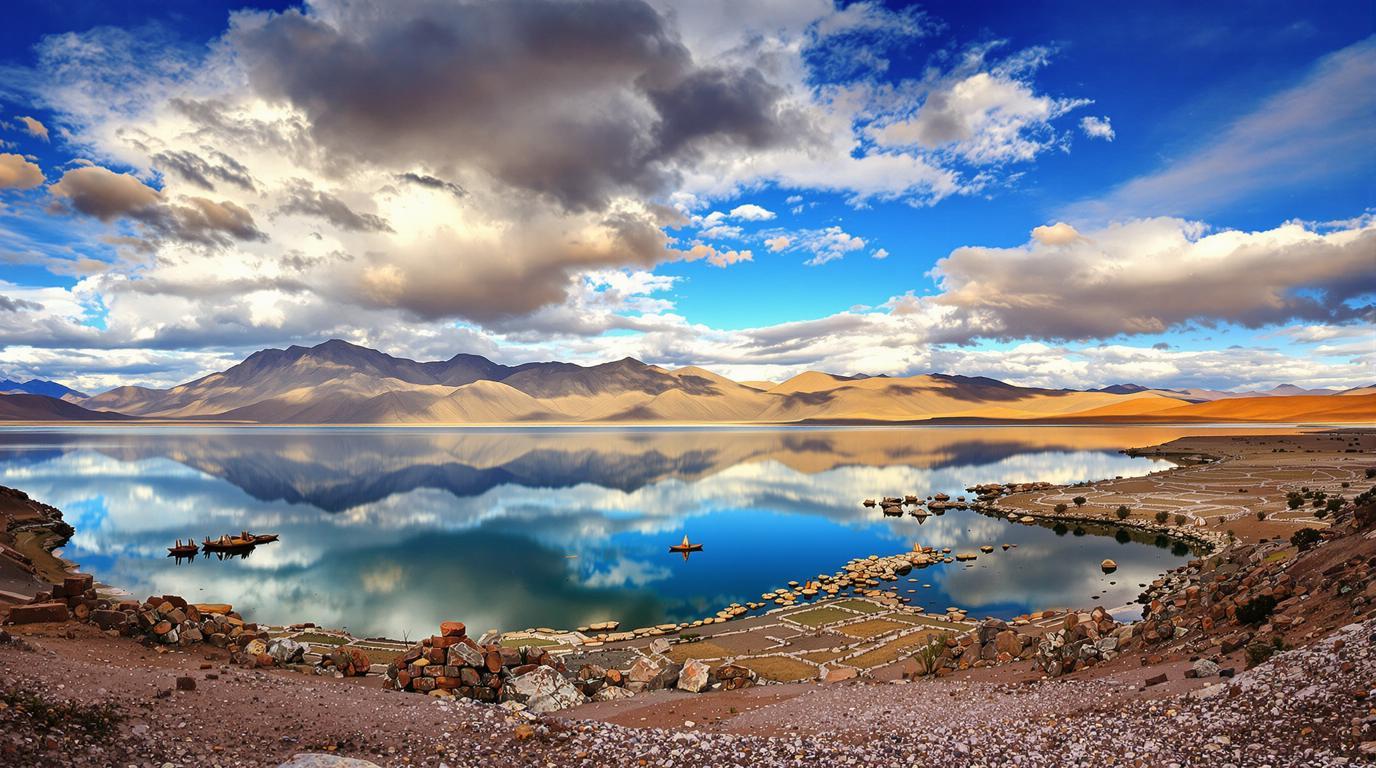The wind whispers ancient Andean secrets as I stand at the edge of Lake Titicaca, where the water mirrors an impossibly blue sky stretched over Peru and Bolivia’s shared treasure. At 12,500 feet above sea level, the thin air seems to amplify the mystical energy that has drawn pilgrims to these shores for millennia. While tourists crowd the main port towns, I’ve discovered hidden corners where time moves differently, and traditions remain unaltered by the outside world.
Where heaven meets earth: The forgotten corners of Lake Titicaca
Long before Spanish conquest reshaped South America, the Inca believed Lake Titicaca was the birthplace of their civilization. The sun and moon themselves were said to have emerged from these waters, blessing the ancient peoples with divine knowledge and agricultural prosperity.
“Our ancestors have lived on these waters for more than 500 years,” explains Elena, an elder from the Uros floating islands. “We no longer live entirely as they did, but we keep their wisdom alive in our hands and hearts.”
While the main floating reed islands have become increasingly commercialized, authentic experiences still exist for travelers willing to venture beyond the standard day tours from Puno. These encounters offer genuine cultural exchange rather than performative tourism.
Hidden sanctuaries that most travelers never discover
The secret chambers of Chucuito’s fertility temple
Just 18 kilometers south of Puno lies Chucuito, where an ancient fertility temple houses dozens of phallic stone monuments that pre-date the Inca. Local guides explain these symbols were part of agricultural fertility rituals, though the site’s true purpose remains contested among archaeologists.
Unlike the crowded ruins near Cusco, I found myself completely alone here one Tuesday afternoon, free to wander among the enigmatic stones as golden late-afternoon light bathed the entire complex. The caretaker, noticing my interest, unlocked a small chamber normally closed to visitors, revealing stone carvings still bearing traces of original pigment.
The weaving women of Llachón Peninsula
On the eastern shore, the remote Llachón Peninsula hosts a community of master weavers who maintain pre-Colombian textile traditions with patterns that tell stories of celestial movements and agricultural cycles. Unlike the commercial demonstrations on Taquile Island, these artisans work primarily for their community’s use rather than tourist consumption.
I spent an afternoon with Dominga, who invited me into her home after I expressed genuine interest in her craft. Using natural dyes extracted from local plants, she demonstrated techniques passed through eight generations of women in her family.
Flavors born from ancient altitude adaptation
In the lakeside village of Luquina Chico, Señora Juana serves trucha al mojo de ajo – freshly caught trout marinated in local herbs and garlic cultivated in terraced gardens dating to Inca times. The dish arrives with chuño, naturally freeze-dried potatoes created using techniques developed by pre-Inca civilizations to preserve harvests through harsh Andean winters.
Unlike restaurant versions in tourist centers, Juana’s preparation maintains the subtle herb combinations that highland families have perfected over centuries. The meal concludes with muña tea, a digestive made from wild mint that thrives only above 11,000 feet.
Navigate like a local: Essential insider knowledge
Timing your journey
Visit during late April or early October to avoid both rainy season and peak tourist crowds. These shoulder seasons offer clear morning visibility for photography before afternoon clouds gather dramatically over the lake. Accommodations during these periods typically cost 30% less than high season rates.
Transport secrets
Rather than booking commercial tours from Puno, arrange boat transportation with communities directly. The Llachón cooperative operates daily departures at 7:30 AM from a small dock east of the main tourist harbor, charging half what commercial operators demand while ensuring proceeds support local families.
The lingering magic of America’s sacred sea
As twilight settles over Lake Titicaca, stars emerge with stunning clarity in the high-altitude sky. Reflected in the still waters, they create the illusion of floating between two star-filled universes. This powerful image captures what makes this place extraordinary – not just its natural beauty or cultural riches, but the way it connects visitors to something transcendent that exists beyond ordinary experience.
Find your way to these quieter shores, where ancient wisdom and genuine connection await those willing to step beyond the standard itinerary into Lake Titicaca’s authentic heart. For budget travelers seeking similar experiences without the altitude challenges, consider exploring affordable exotic destinations for budget travelers that offer authentic cultural immersion.
After experiencing Lake Titicaca’s Peruvian treasures, many travelers miss the opportunity to explore Bolivia’s high-altitude border town experiences that provide access to even more remote lake communities. For those seeking to extend their journey through Peru, consider visiting Peru’s hidden coastal desert villages where ancient cultures have left equally fascinating legacies along the Pacific coast.
